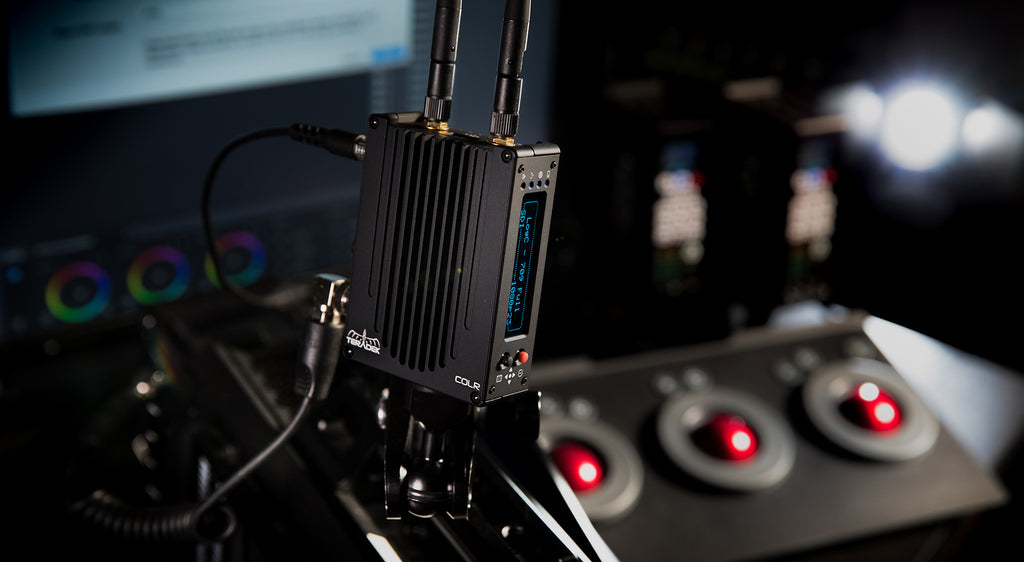From Collateral (2004) to Marlboro commercials, Director of Photography Paul Cameron is no stranger to shooting in a cinematic scale. Westworld, the latest HBO sci-fi masterpiece, intertwines a diversity of looks and colors contrasting vibrant clothes, dusty trails and the dark rooms that embody the future. With scenes jumping from one look to another, Cameron discusses the reasoning behind each sequence.
This video was filmed on location at Keslow Camera in Culver City, California. Paul Cameron, Director of Photography on Westworld, discusses the different cinematic looks of HBO's newest drama and the importance of managing his LUTs.
While Cameron shoots on both film and digital, Westworld’s pilot episode provided him the perfect opportunity to utilize film, his preferred medium. Cameron chose to shoot on film because it helped him to produce a rugged western look that he felt digital was unable to match.
The main town of Sweetwater exhibits an upscale ambience, so Cameron wanted to make the scene look vivid with bright colors and sharper tones for the clothes and people. “The town has a bit of a shine to it. The color is freshly painted; there are touch-ups; people are sleeping in nice sheets. Everything in the saloon is a bit more upscale.”
Transition to the outskirts of town and the look changes to a wilder, arid setting. “As you leave the park, things begin to get a little more dangerous. There’s a bit of a color shift. We begin to get into a dirtier, dustier western world.”
For the control center, Cameron wanted to create a sense of timelessness. “A lot of us weren’t aware of the actual timeframe of Westworld. I wanted to develop a look that was a bit darker and chromatic in the blues and greens so we could do color separations on those sets.”

In projects that call for a more cinematic feel, the importance of scene development cannot be overstated because the look of each scene is essential to visually driving the narrative and storyline of the film. For Cameron, that means choosing looks that are very specific to each setting and maintaining it throughout the series.
While Cameron shot the Westworld pilot episode on film, he explains how his digital workflow is able to achieve similar color grades, planned images, and cinematic and visual intent with Teradek’s COLR device.

COLR is a device designed for production teams to grade images in real-time during filming. Crewmembers like Digital Imaging Technicians or on-set colorists can adjust under-saturated RAW and LOG images from the camera, creating an image that simulates the final, post-production color scheme. It can be connected to a camera or a monitor and applies a custom 3D LUT (or 1D LUT + CDL) to the image for production crews to see.
Color grading in real-time opens up new levels of continuity on film sets. With today’s digital cinema camera technology, images are captured in LOG to represent the most dynamic range, which can look underwhelmingly low-contrast to untrained eyes. With COLR, the DP is able to see a graded image that represents the final color, allowing him to make workflow adjustments on the fly and better decide how to reshoot scenes. It also allows other members like 1st assistants, script supervisors, producers and others at Video Village to make the right adjustments to their specific roles accordingly.
COLR helps Cameron to visualize a creative look while he’s shooting, saving him and his clients the time it normally takes to see a graded image in post. It allows him to easily store up to 32 3D LUTs and change them at a moment’s notice based on the plot, mood, lighting and even camera movement. These LUTs are applied all the way to finishing, protecting his original creative intent through post-production processes like dailies and VFX. Considering the extensive workflow in digital media, having this kind of continuity keeps the color the way he intended.
Because COLR is compatible with commonly used LUT files like .dat, .cube etc., it can work easily with DaVinci Resolve and Pomfort LiveGrade Pro. In addition, it can connect to ASC CDL and ACES servers to make color adjustments in real-time on a computer communicating with the device over WiFi.
“Because it holds [32] cubed LUTs on it, it’s basically like having a box of [32] film stocks for me.”
Real-time color grading and look management help production teams stay consistent with the Director’s and/or Cinematographer’s creative intent and ensure that the look they’ve designed is captured accurately. With production technology improving in strides, devices like COLR will continue to enhance the overall experience of filmmaking and, ultimately, the enjoyment of viewers everywhere.